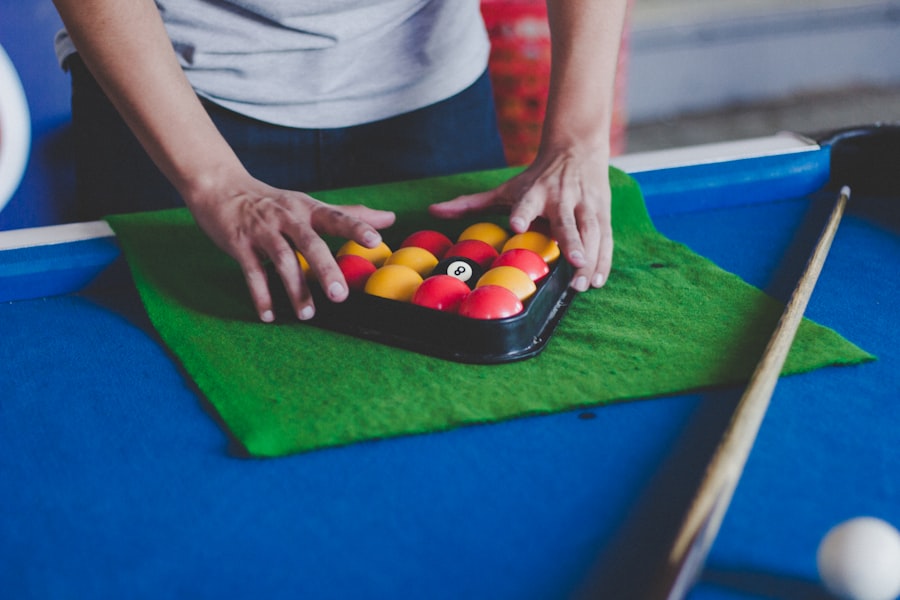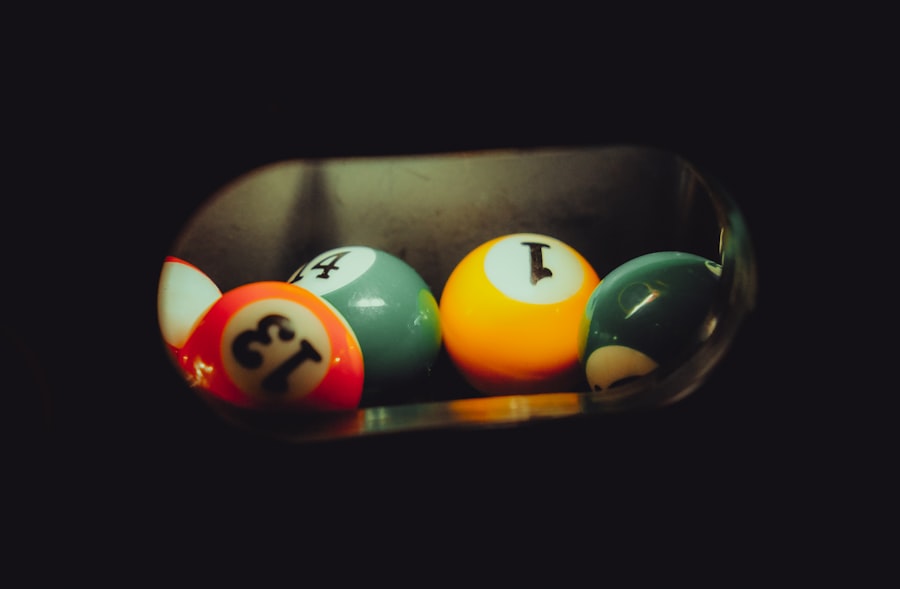The history of billiard ball colors is a fascinating journey that reflects the evolution of the game itself. In the early days of billiards, which can be traced back to the 15th century in Europe, balls were typically made from wood. These wooden balls were often unpainted or stained in natural hues, which made it difficult for players to distinguish between them during gameplay.
As the game gained popularity, particularly in France and England, the need for more distinct and visually appealing balls became apparent. By the 18th century, billiard balls began to be crafted from ivory, a material that allowed for greater precision in manufacturing and a smoother playing surface. The introduction of ivory also led to the first instances of colored billiard balls.
Initially, these colors were applied for aesthetic purposes, but they soon became essential for gameplay. The standardization of colors emerged with the introduction of the game of pool in the United States during the 19th century. The iconic colors we recognize today—solid colors for the numbered balls and striped patterns for others—were established during this period, creating a visual language that players could easily understand.
The Psychology of Color in Billiards
Color plays a significant role in the psychology of billiards, influencing not only player performance but also the overall atmosphere of the game. Different colors evoke various emotions and reactions, which can impact a player’s focus and confidence. For instance, studies have shown that warmer colors like red and orange can stimulate energy and excitement, while cooler colors such as blue and green tend to promote calmness and concentration.
This psychological aspect is particularly relevant in competitive settings where mental acuity is paramount. Moreover, the choice of colors can affect how players perceive their environment. A well-lit table with vibrant colored balls can create an inviting atmosphere that enhances social interaction and enjoyment.
Conversely, dull or poorly chosen colors may lead to a lackluster experience, diminishing the excitement of the game. Players often gravitate towards specific colors based on personal preferences or cultural associations, which can further influence their performance and enjoyment. Understanding these psychological nuances can help players select their equipment and environment more thoughtfully, ultimately enhancing their overall experience in billiards.
The Evolution of Billiard Ball Colors

The evolution of billiard ball colors has been marked by technological advancements and changing tastes over the centuries. In the late 19th century, the introduction of celluloid—a synthetic plastic—revolutionized billiard ball production. This new material allowed for a wider range of colors and designs, enabling manufacturers to experiment with patterns and finishes that were previously impossible with ivory or wood.
As a result, billiard balls became not only functional but also artistic expressions. The mid-20th century saw further innovations with the advent of polyester and other synthetic materials that provided even greater durability and vibrancy in color. Manufacturers began to produce balls with intricate designs, including swirls and gradients that added visual interest to the game.
This period also marked the rise of custom billiard balls, where players could personalize their equipment with unique colors and designs that reflected their individual styles or affiliations. The evolution of billiard ball colors has thus mirrored broader trends in design and technology, showcasing how innovation can enhance both functionality and aesthetics in sports.
The Impact of Color on Gameplay
| Color | Impact on Gameplay |
|---|---|
| Red | Often associated with danger or aggression, can increase player’s heart rate and create a sense of urgency. |
| Blue | Calming and soothing, can be used to create a sense of tranquility or relaxation in the game environment. |
| Green | Associated with nature and can create a feeling of growth and harmony, often used in games with natural settings. |
| Yellow | Can evoke feelings of happiness and energy, often used to draw attention or highlight important elements in the game. |
| Black | Often associated with mystery or power, can create a sense of darkness or foreboding in the game environment. |
The impact of color on gameplay extends beyond mere aesthetics; it can significantly influence player strategy and performance. In games like eight-ball or nine-ball, where players must identify specific balls to pocket, the distinct colors help facilitate quick decision-making. For example, a player may choose to target a solid blue ball over a striped one based on its position on the table and its relationship to other balls.
The clarity provided by color differentiation allows players to strategize more effectively, leading to improved gameplay. Additionally, color can affect visibility under different lighting conditions. Brightly colored balls tend to stand out better against various backgrounds, making it easier for players to track their movements during fast-paced games.
This visibility is crucial in competitive settings where every shot counts. Furthermore, certain colors may reflect light differently; for instance, a shiny red ball may catch the eye more readily than a matte green one. This subtle interplay between color and visibility can influence not only individual performance but also the dynamics of competition as players adapt their strategies based on how well they can see and interact with the balls on the table.
The Art of Custom Billiard Ball Colors
The art of custom billiard ball colors has gained traction among enthusiasts who seek to personalize their gaming experience. Customization allows players to express their individuality through unique designs that resonate with their personal tastes or affiliations. From vibrant hues to intricate patterns, custom billiard balls can be tailored to reflect a player’s personality or even commemorate special occasions such as tournaments or milestones.
Artisans and manufacturers have embraced this trend by offering a range of customization options, including color combinations, graphics, and even personalized engravings. For example, some players opt for custom balls featuring their favorite sports teams’ colors or logos, while others may choose designs that incorporate elements from their cultural heritage. This level of personalization not only enhances the aesthetic appeal of the game but also fosters a deeper emotional connection between players and their equipment.
As technology continues to advance, the possibilities for customization are expanding, allowing for even more creative expressions in billiard ball design.
The Future of Billiard Ball Colors

Looking ahead, the future of billiard ball colors is poised for exciting developments driven by technological advancements and evolving player preferences. Innovations in materials science may lead to even more durable and vibrant options that enhance both performance and aesthetics. For instance, researchers are exploring new types of polymers that could offer improved resilience while allowing for an even broader spectrum of colors and finishes.
Moreover, as sustainability becomes an increasingly important consideration across industries, manufacturers may begin to explore eco-friendly materials for billiard balls that do not compromise on quality or appearance. This shift could lead to a new era of billiard ball production that prioritizes environmental responsibility while still delivering high-performance equipment. In addition to material innovations, advancements in digital printing technology could revolutionize how custom designs are applied to billiard balls.
Players might soon have access to sophisticated customization tools that allow them to create intricate designs with ease, further enhancing their connection to the game. As these trends unfold, it is clear that the world of billiard ball colors will continue to evolve, reflecting both technological progress and the ever-changing landscape of player preferences in this timeless sport.




